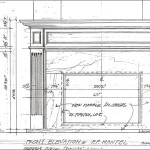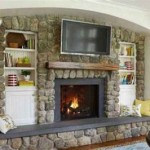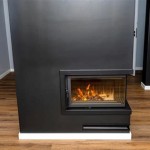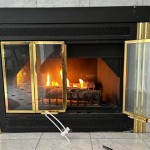High Efficiency Electric Fireplaces: A Comprehensive Guide
Electric fireplaces have emerged as a popular alternative to traditional wood-burning and gas fireplaces. Their ease of installation, low maintenance requirements, and realistic flame effects have made them a desirable heating solution for many homeowners. Beyond aesthetics, however, the focus is increasingly shifting towards energy efficiency. High efficiency electric fireplaces offer a combination of ambient warmth and reduced energy consumption, making them an attractive option for those seeking both comfort and cost savings.
The term "high efficiency" applied to electric fireplaces often refers to the unit's ability to convert nearly all of the electrical energy it consumes into heat. Unlike combustion-based fireplaces, electric fireplaces do not lose heat through a chimney or ventilation system. This inherently makes them highly efficient in terms of energy conversion. However, the actual energy efficiency and cost-effectiveness vary depending on several factors, including the fireplace's heating technology, thermostat settings, and the user's heating needs. Understanding these factors is crucial when selecting a high efficiency electric fireplace.
Understanding Electric Fireplace Heating Technologies
Electric fireplaces utilize various heating technologies, each with its own efficiency characteristics. The most common types include fan-forced heaters, infrared heaters, and zone heating systems.
Fan-forced heaters operate by drawing air across a heated element and then circulating the warm air into the room using a fan. These types are generally efficient for heating small to medium-sized spaces quickly. They are lightweight and relatively inexpensive. However, the continuous operation of the fan can contribute to noise levels and some models might not have sophisticated thermostat controls, resulting in temperature fluctuations and potentially higher energy consumption if not managed carefully.
Infrared heaters, on the other hand, directly heat objects and people in the room rather than heating the air. This allows for more consistent and targeted warmth. Infrared heating is particularly effective in larger rooms with high ceilings or in areas where maintaining a consistent overall temperature is challenging. They tend to be slightly more expensive than fan-forced models, but they can offer greater comfort and potentially lower energy bills due to their targeted heating capabilities. Quartz infrared heaters are a common type, known for their quick heating response and long lifespan.
Zone heating systems are designed to heat specific areas of a room rather than the entire space. This approach allows for greater energy savings by only heating the occupied zones. Some electric fireplaces incorporate zone heating capabilities, enabling users to customize their heating preferences and minimize energy waste. These systems might combine different heating technologies, such as infrared for direct heating and fan-forced for supplemental warmth, to optimize efficiency and comfort.
Key Features of High Efficiency Electric Fireplaces
Several features contribute to the overall efficiency of an electric fireplace. These features encompass the heating system, thermostat controls, and design elements that minimize heat loss.
Beyond the heating technology itself, the thermostat plays a critical role in energy efficiency. Programmable thermostats allow users to set specific temperature schedules for different times of the day, ensuring that the fireplace only operates when needed. This feature can significantly reduce energy consumption, especially in homes with varying occupancy patterns. Some high-end models even offer smart thermostat capabilities, allowing for remote control and energy monitoring via mobile apps. These smart features provide valuable insights into energy usage and enable users to optimize their heating schedules for maximum savings.
Energy-efficient designs can also contribute to overall efficiency. Features such as well-insulated fireboxes and tight seals help prevent heat loss, ensuring that the generated heat remains within the room. The choice of materials can also impact efficiency. Certain materials, such as ceramic, are known for their excellent heat retention properties, which can help maintain a consistent temperature and reduce the need for frequent heating cycles.
Another consideration is the inclusion of energy-saving modes. Some electric fireplaces offer features like eco-mode, which automatically adjusts the heating output based on the ambient temperature. This mode optimizes energy consumption without sacrificing comfort. Dimmer controls for the flame effect can also contribute to energy savings. While the flame effect itself consumes a relatively small amount of energy, reducing its brightness can further minimize overall power usage. Some models offer a flame-only mode, allowing users to enjoy the visual appeal of the fireplace without activating the heating function. This is particularly useful during milder weather when supplemental heat is not required.
Optimizing Energy Use and Cost Savings
Even with a high efficiency electric fireplace, maximizing energy savings requires careful usage and attention to surrounding environmental factors. Proper placement, insulation, and thermostat management are crucial for achieving optimal efficiency.
The placement of the electric fireplace within the room can significantly impact its heating effectiveness. Avoid placing the fireplace near drafts or windows, as this can lead to heat loss and increased energy consumption. Positioning the fireplace in a central location, where the heat can circulate freely, is generally recommended. In larger rooms, consider using multiple fireplaces or supplementing the electric fireplace with other heating sources to ensure even heat distribution. A well-insulated room will naturally require less energy to heat and maintain a comfortable temperature. Ensure windows and doors are properly sealed to prevent drafts. Adding insulation to walls and ceilings can also significantly reduce heat loss, leading to lower energy bills.
Effective thermostat management is essential for maximizing energy savings. Avoid setting the thermostat too high, as this can lead to excessive energy consumption. Instead, gradually increase the temperature until you achieve a comfortable level. Utilize programmable thermostat features to set different temperature schedules for different times of the day. For example, you can set the thermostat to a lower temperature when you are away from home or asleep. Regularly monitor your energy consumption and adjust your thermostat settings accordingly. Many smart thermostats provide detailed energy usage reports, allowing you to identify areas where you can further optimize your heating habits.
Furthermore, consider the overall heating needs of your home. While electric fireplaces can be effective for supplemental heating, they may not be the most cost-effective solution for heating an entire house. In colder climates, a combination of electric fireplaces for zone heating and a central heating system for overall warmth may be the most efficient and cost-effective approach. Regularly maintaining your electric fireplace is also important for ensuring optimal performance and energy efficiency. Clean the heating vents and fan blades to remove dust and debris, which can hinder airflow and reduce heating efficiency. Inspect the power cord and electrical connections for any signs of damage and repair or replace them as needed.
In conclusion, a high efficiency electric fireplace presents a viable option for supplemental heating, combining realistic aesthetics with energy-conscious operation. Understanding the various heating technologies, key features, and strategies for optimizing energy use is crucial for making informed decisions and maximizing cost savings. Careful consideration of individual heating needs and environmental factors will ensure that the chosen electric fireplace effectively contributes to a comfortable and energy-efficient living space.

Are Electric Fireplaces Energy Efficient We Love Fire

Are Electric Fireplaces Energy Efficient Direct Learning Center

How Energy Efficient Is An Electric Fireplace

Electric Fireplace Energy Efficiency Results Most Efficient Wattage Btu For 117 Models

Suncrest Talent Electric Fireplace Suite Flames Co

ᑕ❶ᑐ Energy Efficient Electric Fireplaces For Your Home
.aspx?strip=all)
Top Electric Fireplaces By Size Regency Fireplace S

Tips To Follow When Choosing Wall Mounted Electric Fireplace Proweld

Top Electric Fireplace Brands Sylvane

How Energy Efficient Is An Electric Fireplace
Related Posts








